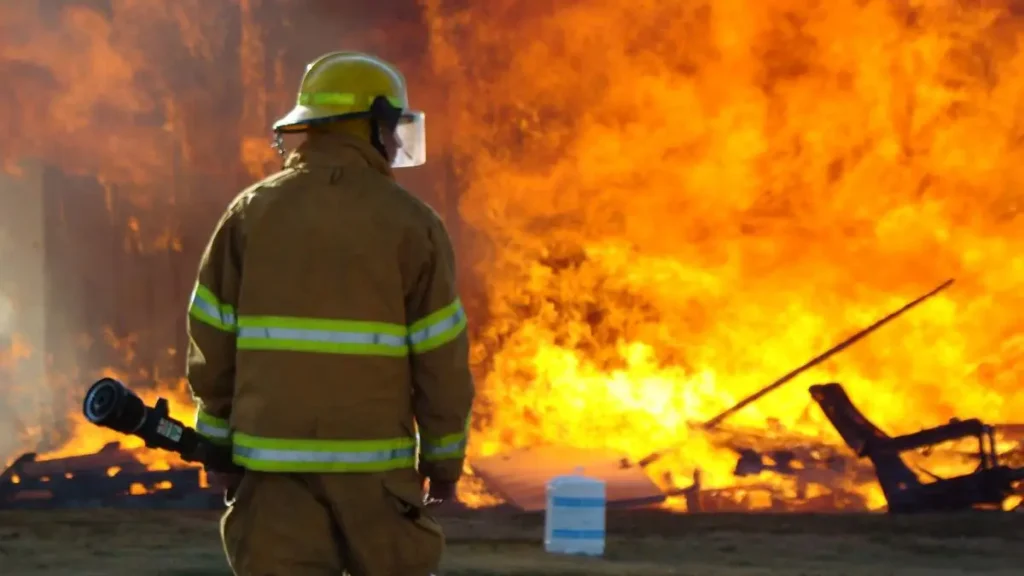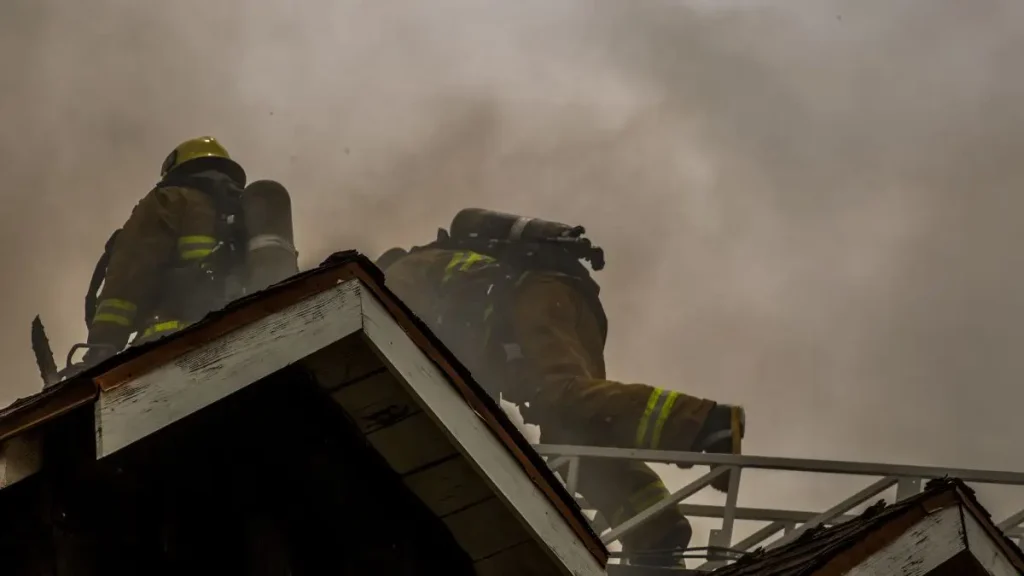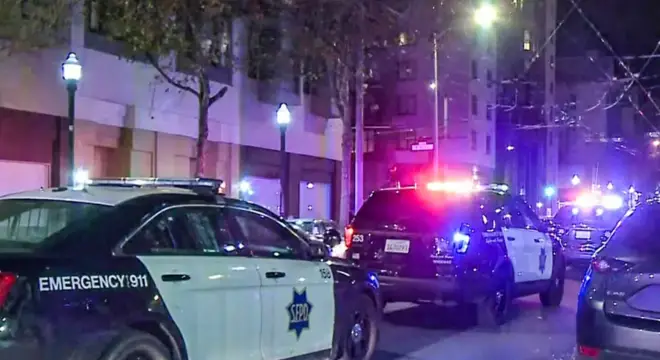Hartford Blaze Leaves One Dead, Nine Displaced as Investigation Begins
I’m reporting from the facts released by Hartford fire officials: just after 10:35 p.m. Monday, crews were called to a structure fire on the 30-block of Elliott Street. When firefighters arrived they found heavy flames on the first floor that quickly spread to the second floor and the roof — a fast, dangerous blaze from the outset.
One person died; another man was taken to a local hospital for smoke inhalation and has since been released. Fire crews say nine adults were displaced by the fire (no children were involved), and the Hartford Fire Department’s Special Services Unit along with the American Red Cross are helping those families.
Elliott Street was blocked while crews fought the fire and the cause is now under investigation by the fire marshal. I’ll lay out the timeline and on-scene response next, and then explain what that rapid spread tells us about safety in older multi-family homes. Want me to move into the timeline now?
How the Fire Unfolded — From a Routine Call to a Fatal Blaze

According to WTNH News 8, firefighters were dispatched around 10:35 p.m. Monday after multiple 911 calls reported smoke and flames coming from a multi-family home on Elliott Street in Hartford’s South End. When crews arrived, they faced heavy fire conditions—the first floor was already burning hard, and flames had climbed up into the second floor and roof.
You can imagine how fast that kind of fire moves in an older structure. Within minutes, the situation escalated into what officials called a “working fire,” pulling in additional engines for support. Residents nearby said the smoke was so dense it darkened the streetlights.
What stands out to me here is the speed and scale of this blaze. The fire wasn’t just in one unit—it had already reached multiple levels before firefighters could get inside. That tells us something about how vulnerable Hartford’s older multi-family homes can be when flames start low and spread through wood and shared walls.
A similar fast-moving fire recently tore through a Portland neighborhood — Portland councilor’s home damaged in overnight blaze labeled suspicious — showing how even well-built homes can become vulnerable under the right conditions.
The Human Cost — One Life Lost, Nine Left Without a Home
The Hartford Fire Department confirmed the tragedy through an official Facebook post, saying one person had died and nine adults were displaced. Thankfully, no children were involved. Another man, treated for smoke inhalation, has since been released from the hospital.
When you read those numbers, it’s easy to skim past them—but think about what “displaced” really means here. Nine people went to bed expecting an ordinary Monday night. Now they’ve lost not just their belongings, but their sense of safety.
The Fire Department’s Special Services Unit and the American Red Cross stepped in immediately to provide temporary housing and essentials.
I’ve seen this kind of aftermath before—families trying to piece together what’s next while still smelling smoke on their clothes. It’s a stark reminder of how quickly a normal evening can turn into loss.
Searching for Answers — What Investigators Know So Far
The cause of the Hartford home fire is still under investigation. Fire officials haven’t released many details yet, but early reports suggest the flames started on the first floor before racing upward. That pattern often points to older wiring, cooking incidents, or malfunctioning heating units—though nothing’s confirmed.
Investigators from the Hartford Fire Marshal’s Office and Fire & Explosion Investigation Unit are working on-site to determine what triggered it. Until then, all we know is that the house is now uninhabitable, and the surrounding area stayed blocked off for hours as crews worked through the night.
In my experience covering fires, this stage always brings both patience and pain—the families want answers, and the city wants to prevent another case like this.
Just few days ago, a Fairless Hills home was destroyed by fire, displacing another family overnight — a chilling echo of how sudden these tragedies can be.
Why Hartford’s Multi-Family Homes Face Higher Fire Risks?
This isn’t Hartford’s first deadly apartment fire, and it won’t be the last unless serious safety updates happen. Many multi-family homes here are decades old, built before modern electrical codes and without enough fire separation between units.
When a fire starts—especially on a lower floor—it often spreads fast through shared hallways and older wooden framing. A lot of these homes also have blocked exits, outdated smoke alarms, or crowded living spaces, all of which can make escape harder.
City officials have pushed inspections before, but with so many aging structures, it’s tough to stay ahead. Every incident like this one should be a wake-up call: fire safety isn’t just about one house—it’s about how we maintain every home on the block.
What You Can Learn — Simple Ways to Stay Safer at Home

If you live in a similar multi-family setup—or even a single-family home—there are real steps you can take right now:
- Test your smoke alarms at least once a month. Replace batteries twice a year.
- Keep escape routes clear and talk through them with family members.
- Avoid overloading outlets or using frayed extension cords.
- Know where your fire extinguisher is (and how to use it).
- If you rent, make sure your landlord’s fire safety checks are up to date.
It’s easy to think this can’t happen to you—until it does. And while firefighters and city crews do heroic work, safety really begins inside your own walls.
If you’ve ever had to deal with a fire scare or know someone who’s been through it, what was the hardest part of recovery for them? I’d love to hear your thoughts—because stories like this aren’t just news; they’re lessons for every one of us who calls a house “home.”
I often share quick home safety reminders and verified local fire updates through a WhatsApp channel that keeps residents informed in real time. If you find safety checklists helpful, you might want to join — it’s a simple way to stay alert before emergencies happen.
Hartford Steps Up — How the Community Is Helping
In the hours after the Hartford home fire, neighbors didn’t just stand by — they showed up. People brought blankets, coffee, and even phone chargers to help the nine residents who suddenly had nowhere to go. The American Red Cross is coordinating temporary housing, but it’s often the little acts of kindness that matter most in those first 24 hours.
City officials also praised firefighters for containing the blaze before it spread to nearby homes — a real risk in Hartford’s South End, where older houses sit close together. Local churches have started collecting clothing and household donations, and several residents on social media have offered spare rooms or rides to shelters.
I’ve seen this pattern before: tragedy hits, and Hartford rallies. That spirit is something this city has built its recovery on — people taking care of one another when systems alone can’t fill the gap.
If you want to help, check for verified donation links through the city or Red Cross Connecticut Region before contributing. Scammers often surface after high-profile incidents, so always give through official pages.
We saw similar resilience in Massachusetts when a home fire left a resident severely burned — proof that even in loss, communities find ways to rebuild.
What Comes Next — Investigation and Lessons Ahead
The Fire Marshal’s Office is still piecing together the exact cause of Monday night’s fire. It may take days — sometimes weeks — before investigators can confirm whether it was electrical, accidental, or something else. Once the findings are public, they’ll likely shape future safety inspections for Hartford’s older buildings.
From what I’ve learned covering incidents like this, every fire leaves behind two stories: one about loss, and another about what needs to change so it doesn’t happen again. For Hartford, that could mean tougher code enforcement for landlords, more funding for smoke detector programs, and community-wide education on fire escape planning.
And if you live here, this story isn’t just news — it’s a reminder. Walk through your home tonight. Check your alarms, trace your exits, notice the small things that could make the difference one day.
The official report will tell us how this started. What we do next will decide whether it happens again.
What This Fire Tells Us About Safety and Resilience?
There’s a lot to unpack from what happened on Elliott Street — and not just the facts. Fires like this hit harder because they expose how fragile “home” really is.
Here’s what stays with me after looking at all the details:
- Old homes, new risks. Many of Hartford’s multi-family houses were built long before modern fire codes. Without regular updates, they become vulnerable — not just to fire, but to time.
- Quick response saved more lives. Fire crews acted fast, and that likely prevented an even bigger tragedy.
- Community still matters. From neighbors stepping up to the Red Cross helping overnight, Hartford proved once again that compassion travels faster than fire.
- Awareness is power. The next time you test your smoke alarm, remember this story. Small habits keep entire families safe.
You and I might not control every outcome — but we can control how ready we are.
If you’re reading this from Hartford or any city with older housing stock, what steps have you taken to keep your home fire-safe? Share them — your experience might help someone else avoid becoming tomorrow’s headline.
If you want to stay updated on fire safety news, local incidents, and recovery stories, explore more reports like this on Home Incidents section— where every story helps make our homes a little safer.
Disclaimer: Details in this article are based on official reports from the Hartford Fire Department and local reports. The investigation into the Elliott Street fire is ongoing, and information may change as officials release updates. Readers are advised to follow verified city and fire department channels for the latest developments.


